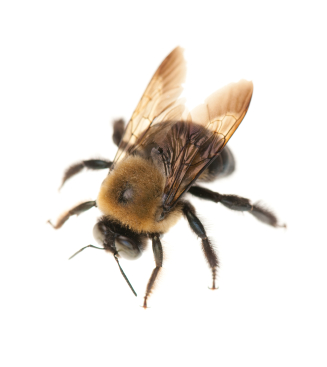
The Appearance of a Bee
While every bee has a head, thorax, abdomen, and four wings, there are some physical differences that stand out between species. Honey bees, for example, are typically three-quarters of an inch long, hairy, and brownish-black with yellow-orange bands. Killer bees have an almost identical appearance to that of honey bees, despite being slightly smaller in size, and people are usually unable to tell the two species apart. Bumble bees are also covered in hair, but are larger. Their bodies are dark in color with yellow markings.
On the other end of the spectrum, carpenter bees are hairless and have a glossy, metallic appearance. Furthermore, queen and worker bees of each species tend to have slightly different appearances.

Bees in Homes & Yards
Bees are frequently found nesting in areas close to people, whether in the ground, on tree limbs, or around the ledges of homes. These important pollinators are attracted to flowers and often infest gardens and fields, as well. Some people confuse the stinging pests with wasps, but wasps are not fuzzy and have slimmer bodies.
Additionally, honey and killer bees are often mistaken for one another because of their close resemblance. Killer bees are an aggressive species, even when unmotivated to attack. These pests, unlike honey bees, will chase people and sting in large numbers.
Problems Associated with Infestations
Though most bees usually avoid interactions with humans, their ability to sting still poses a threat. The pests are sometimes found hovering near garbage bins, drawn in by sweet or fatty food scraps. In certain cases, colonies develop in walls, voids, or attics, which increases the odds of being stung. Carpenter bees also have a knack for damaging wooden structures.
Ultimately, bees should be protected, as they contribute greatly to the well-being of our ecosystem. For help relocating bumble or honey bee colonies in homes or yards, or for killer bee identification and extermination services, contact the experienced bee and wildlife removal technicians at Critter Control.